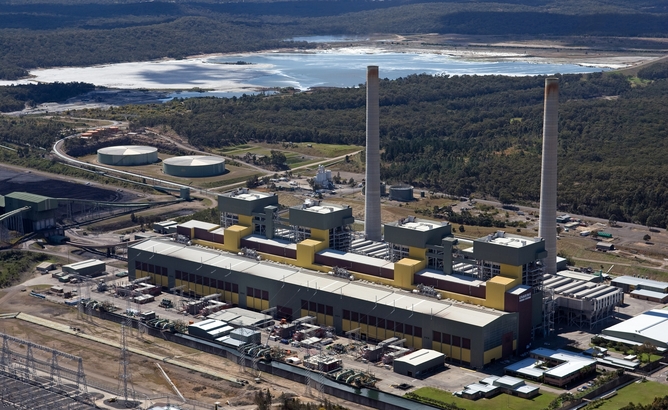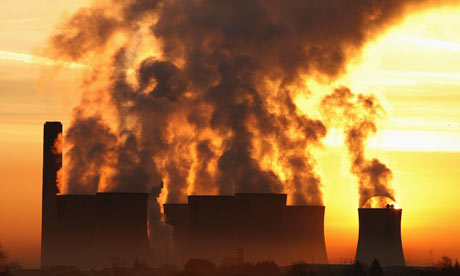Climate policy is in the media yet again, but this time it might be different. The set of policy principles released by the Australian Climate Roundtable yesterday are extraordinary for two reasons.
First, the principles themselves offer some calm common sense in an arena that has been dominated by ferocious partisan politics and dramatic policy reversals. They could therefore offer a way to break the current policy deadlock and re-establish a bipartisan approach to climate change.
Second, the principles are the product of a highly unusual alliance of ten organisations, representing business, unions, environmentalists, and the community. It is unusual that such disparate groups can sit down together to talk, and downright extraordinary that they can agree on a common set of principles. So what is going on here?
A principled approach to policy?
On the first point, the principles state that:
Our overarching aim is for Australia to play its fair part in international efforts to achieve this while maintaining and increasing its prosperity.
The Roundtable’s ideal policy would lead to “deep reductions in Australia’s net emissions”, using policy instruments that are well targeted, well designed, based on sound risk assessments, internationally linked, operate at least cost, and are efficient.
On the environmental side, there is a demand for net zero emissions in the long run, an acceptance that there are market failures that need to be fixed, and a call for long-term planning based on climate change scenarios.
On the economic side, there are statements about achieving reductions at the lowest cost, avoiding regulatory burdens, ensuring no loss of competitiveness for trade-exposed industries, and the need for a smooth transition to a low-carbon economy, without undue shocks for investors.
Finally, on the social side are concerns about providing decent work opportunities, protecting the most vulnerable people, and helping communities to make the necessary transition.
While there is apparently something here for everyone, the contentious issues are avoided. There is no mention of the government’s Direct Action Emissions Reduction Fund, the former government’s price on carbon, or the recently reduced Renewable Energy Target. This is clever politics, as it allows for the establishment of a broad consensus without the need to quibble over policy detail.
An unlikely alliance
The roundtable’s membership is remarkably diverse: the Australian Aluminium Council; the Business Council of Australia; the Australian Industry Group; the Energy Supply Association of Australia; the Investor Group on Climate Change; the Climate Institute; WWF Australia; the Australian Conservation Foundation; the Australian Council of Trade Unions (ACTU); and the Australian Council of Social Services (ACOSS). How and why did these disparate groups form such an alliance?
It is clear from the principles themselves that all the member groups want some policy consistency that will survive regardless of who is in government. The last thing they want is for the recent cycle of major policy changes to continue.
Such reversals impose waves of new compliance costs on industry and create uncertainty for investors, which is why business is so heavily represented in the Roundtable. Policy changes also make it difficult to consolidate significant emissions reductions, which is where the environmentalists come in. Finally, policy uncertainty has implications for employment options and the cost of living, which is why the ACTU and ACOSS are also on board.
There are also some specific strategic advantages to being involved in the Roundtable for each of the participants.
Business groups that have been getting bad publicity about their contributions to climate change might use the Roundtable to improve their image and frame the future policy debate in a way that suits them (for instance, by calling for a strong focus on costs and competitiveness).
Environmentalists, who have effectively been sidelined by the Abbott government on climate change, might see this is a way to deal themselves back into the policy game and make some progress in reducing emissions.
Unions concerned about their members’ future employment might see this as a way to manage the transition by creating new “green-collar” jobs that will offset the loss of employment opportunities in the older polluting industries.
Finally, ACOSS is clearly worried about the impact of climate polices on low-income households, and being part of the Roundtable ensures that their concerns are heard.
A precedent for influencing policy?
While unusual, alliances such as the Australian Climate Roundtable are not unknown in Australian environmental policy. Sometimes they have led to the creation of effective long-term polices; other times they have fizzled out, leaving little more than rhetoric.
One positive example is that of Landcare. In 1989 the Australian Conservation Foundation and the National Farmers’ Federation proposed a grant scheme that would empower communities to rehabilitate their local environment. More than a quarter of century later, Landcare is still going strong with the support of all four leading political parties.
On the negative side, an extensive consultation process involving all levels of government, business, unions and environmentalists led to the creation of the National Strategy for Ecologically Sustainable Development in 1992. It is still on the books and referred to by current legislation, yet we don’t appear to be much closer to sustainability.
So will this be a Landcare moment or not? Only time will tell. ![]()
Disclosure statement
Michael Howes received funding from the National Climate Change Adaptation Research Facility 2012-13







